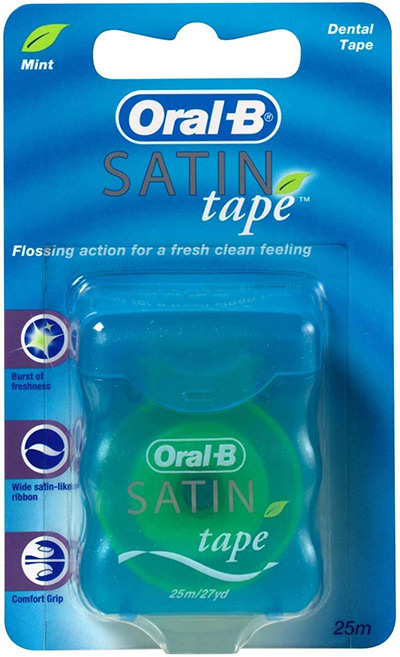The Floss
When you think of flossing do you think about dental hygiene or does your mind go directly to a dance called The Floss? If you’re a parent and you don’t know this already, here is what your kids are up to when you’re not around.
They’re doing The Floss, a dance made famous by this kid:
I'm sure we can agree that this social media fad has nothing to do with dental hygiene. The only resemblance to the possibility is the dance name, The Floss.
And just like this viral Internet dance craze, actual flossing is about technique and making all the right moves.
Now if we could only get as excited about flossing our teeth as these kids get about The Floss!
Floss Like A Boss
Flossing goes a long way towards promoting oral and dental health. Nonetheless, studies show that very few people floss regularly. Only about one-third of Americans floss daily. It’s no secret that people don’t floss as much as dentists and oral health professionals would like them to.
According to the American Academy of Periodontology, nearly 14 percent of survey respondents preferred cleaning the toilet over flossing. Even more amusingly, 9 percent of those surveyed favored gridlock traffic and doing their taxes. That’s right, nearly one out of ten Americans would rather sit in standstill traffic or fill out an insane amount of paperwork than to floss their teeth.
Something is out of order here. Part of the reason, I suspect, for the bad rap given to flossing is that many people don’t know how to floss. Flossing needn’t be difficult or time-consuming. With the right tools and a little practice, you’ll be dancing the string between your teeth and flossing like a pro in no time.

Begin by wrapping approximately one and a half feet (18 inches) of string around one of your middle fingers, with the rest wound around the middle finger on the other hand.
Now hold the floss tight between the thumbs and forefingers.
Very gently guide the floss in between the teeth with your fingers.
Be sure to curve the floss into a “C” shape that wraps against the surface of the tooth.
Gently rub up and down on the tooth with the string. Avoid sudden jerking motions.
Finally, use the same technique to floss all your teeth, including the ones in the back.
Not everyone enjoys using string floss, however. Many find string floss to be fussy and complicated to use. For these people, I would advocate patience. A little practice will go a long way. Once you get the hang of flossing with the right technique, flossing will become as easy as brushing your teeth.
Those who want to floss with more advanced tools or prefer alternative flossing techniques to plain old string floss, following are some great alternatives.
Advanced Flossing Tools To Consider
Oral-B Essential Floss - Waxed Dental Floss
I highly recommend waxed floss for those who find regular string floss to be somewhat uncomfortable. The coat of wax reduces friction between the string and teeth leading to improved comfort. Several brands offer waxed floss; however, you won't go wrong with Oral-B Essential Floss.
Oral-B Satin Tape - Dental Tape
Dental tape is a type of monofilament string floss that many people find it easier to grip and use thanks to a wider form factor. Dental tape covers a broader surface area than standard string floss which can make it easier to use and more effective for some. Furthermore, the wider form factor of dental tape is excellent for cleaning more significant gaps in between teeth.
GUM Butlerweave - Fiber Woven String Floss
There are a few different types of string floss that have their unique strengths and weaknesses. One of the most common is multifilament or fiber woven string floss. These are mainly small ropes made from twisted strands of nylon fiber.
Multifilament woven floss is inexpensive. A typical roll will cost less than a dollar. However, there are some drawbacks to woven string. After a few rubs, woven strands can fray or break leading to discomfort and inadequate removal of unwanted plaque.
DenTek - Floss Pick
Flossing with traditional string floss can be difficult for many people. Proper technique is essential for regular string floss to be effective. It can be awkward at times getting to the back teeth with regular string floss. However, with a floss pick, flossing is much more relaxed and comfortable.
A floss pick is a small piece of string floss held in place by a plastic prong, like a slingshot. On one end of a floss pick is the string and prong, and on the other side is usually a sharp point, or pick, that can be used as a toothpick.
Phillips Sonicare - Electric Flosser
There are several electric-powered flossing alternatives. The Phillips Sonicare AirFloss is one alternative, it directs a steady stream of pressurized air mixed with water vapor to produce the same plaque-removing effects of a water flosser but using much less water. Air flossers are also much more compact and less unwieldy compared to conventional water flossers.
Waterpik - Water Flosser
The Waterpik utilizes pressurized water to assist in cleaning around and in between teeth. Much like pressure washing the siding of a house, water flossers shoot a jet of water to help in the removal of dental plaque and food.
Some people don’t have the dexterity or the patience to use string flosses. This is where water flossers could be an advantage. While significantly more expensive than a simple roll of floss, water flossers such as Waterpik do provide some compelling advantages over traditional flosses.
Water flossers require less dexterity and maneuvering to use effectively. Whereas poor form or technique can significantly hinder the efficacy of string floss, a water flosser is simple to use, straightforward, and effective. Just point the water flosser at the gumline and in between teeth and blast away. The water flosser will fire a stream of pressurized water that can assist in plaque removal. A water flosser is ideal for those with arthritis or limited mobility in their wrists. The ease of use also encourages more frequent use which can also be useful for building better oral hygiene habits.
Don’t Just Floss, Floss Better
If you rarely floss or you don't floss at all, it’s time to start flossing. Brushing alone isn’t enough. For those who do floss, but aren’t flossing regularly, perhaps it’s time to try something new.
Along with brushing and regular dental checkups, flossing is one of the cornerstones of a good oral hygiene routine. And while it is undoubtedly less trendy than the now ubiquitous children’s dance craze, the “Floss Dance,” it is no less critical. With the right tools and the proper techniques, flossing can be fun too. So floss your teeth at least once a day every day with whichever tool that works best for you.















